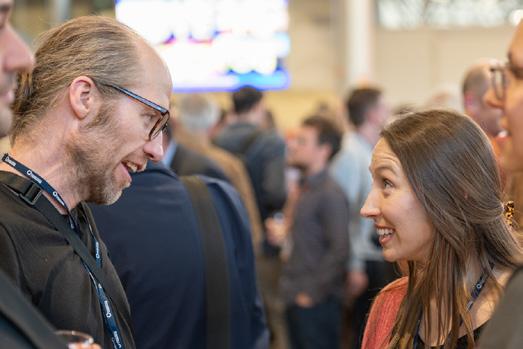Endocrine Views



Get ready for World Hormone Day! 2024: the ESE year in review
Copenhagen is calling: don’t miss the Congress and Pre-Congress events
Insights into the 2025 Award Lectures
Congress events for ESE communities, Transatlantic Alliance Award 2025 and 2026, plus the latest from the ESE Office 05 Jérôme Bertherat: stepping down after two remarkable years, plus EndoCompass prepares for launch 06 ESE in 2024: the year in review
Meet Josef Köhrle, Editor-in-Chief of Environmental Endocrinology
Crinecerfont: a treatment for congenital adrenal hyperplasia across the life course
Managing Turner syndrome across the life course
16 Going global: you can help World Hormone Day to raise awareness!
17 Gérald Raverot previews ESE’s updated guideline on aggressive pituitary tumours
Editor: Marek Bolanowski, Poland
Email: marek.bolanowski@umw.edu.pl
Deputy Editor: Eleni Armeni, Greece/UK
Email: eleniarmeni@hotmail.com
Co-Editor: Jérôme Bertherat, France
Email: ese.president@ese-hormones.org
Editorial Board: Faisal Ahmed, UK
Wiebke Arlt, UK
Bjørn Olav Åsvold, Norway
Juan Manuel Jiménez Vacas, UK
Niki Karavitaki, UK
Karim Meeran, UK
Stavroula Paschou, Greece
Victoria Withy, ESE Office
Maria Chiara Zatelli, Italy
Karin Zibar Tomšić, Croatia
Managing Editor: Caroline Brewser
Design: Qube Design Associates
Website: www.ese-hormones.org
©2025 European Society of Endocrinology
Cover Image: ©Shutterstock/Monkey Business Images
The views expressed by the contributors are not necessarily those of ESE. This document is available on the ESE website, www.ese-hormones.org
The addresses used to email this issue of Endocrine Views were supplied by the members of ESE. If you do not wish to receive further mailings, you can update your mailing preferences in your Member Portal or email info@ese-hormones.org
ESE thanks the following for their support.
Premium Corporate Members: Ascendis Pharma, Esteve, Novo Nordisk, Recordati Rare Diseases
Corporate Members: BridgeBio, Camurus Pharmaceuticals, Inozyme Pharma, Ipsen, Kyowa Kirin, Neurocrine Biosciences, Uni-Pharma
Supporters: Crinetics Pharmaceuticals

The excitement is building, with the Joint Congress of ESPE and ESE now only a few weeks away, on 10−13 May in Copenhagen, Denmark. This is a unique opportunity for adult and paediatric endocrinologists to meet and share their expertise. Ensure your place by registering now!
This issue focuses on many activities at the Congress, including the official launch of the EndoCompass Research Roadmap – Directions for the Future of Endocrine Science. These recommendations are set to transform the future of our field. Find out more on page 5
The Congress will include sessions for early-career colleagues, nurses and women in endocrinology, and a range of pre-Congress events (see pages 3 and 4). ESE President Jérôme Bertherat will complete his term of office, and he shares his perspective on two remarkable years on page 5. You will also be able to enjoy the 2025 ESE Award Lectures at the Congress, and we are excited to preview these on pages 12 and 13
The Congress theme is Connecting Endocrinology Across the Life Course, and this is reflected in two features in this issue. On page 13, colleagues from the USA discuss their recent groundbreaking trials of crinecerfont in congenital adrenal hyperplasia in children and adults. Meanwhile, on page 15, paediatric and adult endocrinologists from Italy come together to consider the management of Turner syndrome at different ages.
Gérald Raverot heralds the imminent arrival of an updated ESE guideline on the management of aggressive pituitary tumours (page 17), and we also talk to Josef Köhrle as Editor-in-Chief of the new ESE journal Environmental Endocrinology (page 11). Between now and the Congress, World Hormone Day will seek to raise awareness of the importance of hormone health. Find out how you can take part on page 16.
Finally, don’t miss our review of the very many achievements of ESE in 2024, captured in our Annual Review (pages 6−10).

Adrenal and Cardiovascular Endocrinology
Environmental Endocrinology
Reproductive and Developmental Endocrinology
Pituitary and Neuroendocrinology

On 10-13 May 2025, history will be made when the European Society for Paediatric Endocrinology (ESPE) and ESE cohost their first ever Joint Congress.
Make sure you don’t miss this landmark event. ‘Connecting Endocrinology Across the Life Course’ will bring together paediatric and adult endocrine specialists from across Europe and the rest of the world to collaborate and celebrate endocrinology in Copenhagen, Denmark.
You will have the chance to network with over 6000 delegates from over 100 countries, to experience the latest endocrine research and developments. The Congress programme EXTERNAL-LINK-ALT has been created by a joint Scientific Programme Committee. It includes sessions to tempt both paediatric and adult endocrinologists, some of which are on topics relevant to
both areas, while others are tailored to the interests of paediatric or adult endocrinologists. You can enjoy plenary lectures, symposia, award sessions, Meet the Expert sessions, oral and rapid communications, and more.
A new Joint Award of ESPE and ESE – the Endocrinology Across the Life Course Award – will be presented, and the 2025 award winners from both societies will deliver their lectures. The Joint Congress of ESPE and ESE 2025 will be the only annual Congress held by either society this year.
Cynthia Andoniadou and Peter Kühnen are the Joint Chairs of the Programme Organising Committee, representing ESE and
ESPE respectively. Both are excited by the opportunity to bring adult and paediatric endocrinologists together.
Peter commented, ‘It’s time to have a Congress together, for people to exchange information, independent of whether you’re working in the adult or paediatric field. There’s room for interaction,
to discuss science and treatments.’ Cynthia added, ‘The programme will appeal to delegates from both societies, but it’s not going to be a conference led by ESPE and a conference led by ESE running in parallel, it’s going to be a true joint Congress. Delegates from both societies will find sessions that they recognise, and some new sessions.’

‘We hope this Joint Congress provides inspiration for adult and paediatric endocrinologists to work more closely together, not only for collaborative research but also for the transitional care for our patients. We are much stronger when our two societies combine our efforts, which has already been demonstrated through the impact of projects we have been working on together over the last few years.’
Anita Hokken-Koelega ESPE President
‘We wanted to organise this Joint Congress because hormones matter throughout the lifetime, from birth to senescence. This combined activity is important not only for endocrine research and healthcare but also for policy and advocacy, and the ongoing concerns we have in respect of endocrine disruptors. When you come to a meeting you come for science, networking and to make new friends, and that should be one of the best outcomes of this meeting.’
Jérôme Bertherat ESE President
ESE is delighted that our valued patient advocacy groups (PAGs) will once again be present as we meet for the Joint Congress in Copenhagen.
At the Congress, the dedicated Patient Experience Zone in the poster hall will enable you to find out about their important work and how they can support your research and clinical practice. You can also visit the Endo-ERN stand in the exhibition hall to learn about their ePAGS (European PAGs).
Sunday and Monday will see the popular Patient’s Voice sessions, where patient advocates and clinicians will share how collaboration can improve disease
awareness and management. All eight sessions will be live-streamed and available on demand, and some additional PAG presentations will be on the Congress online platform throughout the event.
So, whether you’re joining us in Copenhagen or online, check out activities from our PAG community!


Professor Ashley Grossman is the 2025 recipient of the Transatlantic Alliance Award EXTERNAL-LINK-ALT , which is jointly awarded by ESE and the Endocrine Society. It recognises his significant contribution to the advancement of research in endocrinology through collaboration in both the USA and Europe.
Ashley Grossman is Emeritus Professor of Endocrinology and Fellow of Green-Templeton College
Spring is here and, as a result of a lot of hard work by the ESE Team, we have much to look forward to over the coming months.
The upcoming Joint Congress of ESPE and ESE in May will be a truly exciting opportunity for us all to meet, and to make new friends and collaborations. For the first time, we are jointly organising a Congress which will bring together the worlds of paediatric and adult endocrinology, across all our communities. These include clinicians, scientists, nurses,
patients and industry – all focused on the ultimate aim of benefiting endocrine patients.
But, before the Congress, we will mark the first World Hormone Day, as everyone once again collaborates to raise awareness of hormone health #BecauseHormonesMatter. Join us to reach the widest possible audience on 24 April 2025 – and throughout the year. Find out how you can support the day on page 16
As well as looking forward, please join us in reflecting on ESE’s many achievements of 2024, collected
‘We have been delighted to have received so many applications following our open call for ESE committee members.’
at the University of Oxford, UK, Professor of Neuroendocrinology at Barts and the London School of Medicine, and Consultant NET Endocrinologist at the Royal Free Hospital, London.
His award will be presented at ENDO 2025 in San Francisco, CA, USA on 12-15 July 2025.
Make your nominations now for the 2026 Transatlantic Alliance Award EXTERNAL-LINK-ALT
together in our Annual Review (page 6). I hope you enjoy looking through this as much as I did. What are your favourite ESE highlights from 2024? There are so many that I find it hard to choose − and 2025 is likely to be just as busy!
I am sure you will also join me in congratulating our former President, AJ van der Lely, who was made a Knight in the Order of the Dutch Lion on 14 March 2025. This decoration was bestowed to recognise his services to science, education and his patients.
We have been delighted to have received so many applications following our open call for ESE committee members. In total, there were 139 applications for 12 positions. This shows amazing engagement and interest in working with ESE. We appreciate each and every application. If you are not successful this time, please try again in future and don’t give up.

Finally, I extend my huge thanks to Jérôme Bertherat for his presidency over the last two years, his leadership, collaboration and kindness − and his support and appreciation of the growing ESE Team.
Helen Gregson Chief Executive Officer,
ESE
Jérôme Bertherat reflects on the highlights of his time as President of ESE.
As I approach the end of my term as your President, it is time to reflect on the activities of this wonderful, very enjoyable and unique period in my professional life. Two years go by very quickly, but so much has happened that it has been fast and fabulous!
First of all, I have enjoyed working with a community that manages to be exceptionally active, dedicated, smart and energetic, while remaining very collaborative and friendly. I think the secret to this great mixture is that we all enjoy interacting internationally with a very diverse community that shares a common passion for hormones.
I have been privileged to contribute to the impressive growth of ESE during my presidency. This growth is the natural evolution of our young society. It is now reaching a very mature stage of development. It needs to be stimulated, bearing in mind the sustainability of our Society and planet. We are witnessing the result of the long term strategic development planned by successive
ESE Presidents, the dedication of the members of our community who participate in our many committees, and the invaluable support of the growing and wonderful ESE Team. A constellation of smiling faces, eager to interact and participate in common activities, is the image now etched in my mind.
So many great activities have been developed or launched in these two years. It is difficult to give a complete picture in a short article. Many of them have been the result of long term planning, but I have also had a few pleasant surprises as well.
Our members will be aware of the major change to our website and management system, which took place in 2024 and is the backbone of our infrastructure, supporting our growth.
Among the many activities developed during my presidency have been:
• the launch of two new journals
− Obesity and Endocrinology and Environmental Endocrinology

• EndoCompass – a roadmap for endocrine research over the next decade
• European Hormone Day – so successful that it became World Hormone Day!
I was also very pleased to see the increasing number of interactions with other endocrine societies. For example, the launch of the Transatlantic Webinar and the presentation of a first joint guideline with the Endocrine Society, and our interaction across the Mediterranean leading to the launch of an educational webinar for the French-speaking community.
On a completely different note, during my presidency, we have
also interacted with the endocrine community in countries in or near Europe that are directly affected by war. I firmly believe that supporting our endocrine community in a humanitarian spirit is one of our core values.
Last but not least, I would like to mention our positive and pleasing interaction with the European Society for Paediatric Endocrinology. This, in a way, is the highlight of the end of my term. It has resulted in our Joint Congress: a unique opportunity to bring together the largest endocrine community, to celebrate our common passion for hormones.
Jérôme Bertherat ESE President
Endocrine diseases affect millions of people in Europe, yet research into hormone health remains underfunded and fragmented. The EndoCompass project aims to change this by identifying research priorities to guide future studies, funding programmes and policy decisions at European and national levels.

Initiated by ESE and the European Society for Paediatric Endocrinology (ESPE), the project has involved two years of collaboration with our partner societies and more than 215 experts from across Europe. The output is a clear, evidencebased framework to improve the co-ordination, visibility and impact of endocrine research. Recommendations span eight endocrine specialities and five overarching areas. ESE and ESPE are hugely grateful to everyone involved in this team effort!
The EndoCompass Research Roadmap – Directions for the Future of Endocrine Science is set for release shortly as a supplement to European Journal of Endocrinology and Hormone Research in Paediatrics Key findings will be shared at its official launch at the Joint Congress in Copenhagen EXTERNAL-LINK-ALT
Finding your way with EndoCompass
EndoCompass is a resource for the whole endocrine community to cite and share. Over the next few months, look out for more information to help you:
• Navigate EndoCompass: what is EndoCompass and where can you find it?
• Explore and engage: how do the recommendations relate to your work?
• Spread the word: how can you share EndoCompass to strengthen its influence?
• Widen the impact: how can you help turn recommendations into actions?
The focus will shift to putting the recommendations into practice and ensuring the findings drive real change in endocrine research. Join the journey at www.ese-hormones.org/endocompass
ESE is central to Europe’s endocrine community, and represents over 22,500 endocrinologists across the continent. We are proud of the way we work.
Our strategy for 2022−2026 EXTERNAL-LINK helps us drive progress by:
• UNITING and REPRESENTING the European endocrine community and being acknowledged as the reference point for endocrine health and science
• SUPPORTING our members in education, clinical practice and research
• Further ADVANCING the science and clinical care of endocrinology
• Reinforcing ESE as a leading society which is SUSTAINABLE, TRUSTED AND VALUED
Sebastian Neggers became the Society’s Treasurer, while Elena Valassi and Gregory Kaltsas joined the ESE Executive Committee EXTERNAL-LINK-ALT, as Co-Chair of the Rare Disease Committee and Chair of the Education Committee respectively.
In addition, Kirsten Davidse, Charlotte Höybye and Walter Vena joined the Executive Committee as ex-officio members, representing the Nurse Committee, ECAS and the EYES Committee.
We thank Djuro Macut, Mirjam Christ-Crain, Sherwin Criseno, Anton Luger and Antoan Stefan Šojat who stepped down from these roles.
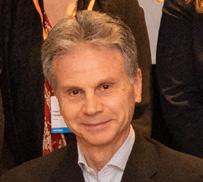
We were delighted to welcome all the new faces who joined ESE committees in 2024.
Our calls for new committee members led to:
139 applications from >30 countries for
12 positions
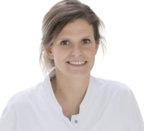



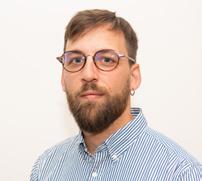
‘We aspire to be visionary, inspiring, engaging and supportive. We are open, transparent and inclusive in everything that we do, and work towards diversity across our activities.’
Three new staff members EXTERNAL-LINK-ALT joined ESE: Megan Gell, Martin Goodman and Gay Lombard.
ESE now employs a team of 20 people, representing 9 European countries plus Australia and New Zealand.

Abbreviations used in the Annual Review: AMH, anti-Müllerian Hormone; CRH, corticotrophin-releasing hormone; EARS, ESE Advocacy Representation Scheme; ECAS, ESE Council of Affiliated Societies; EDCs, endocrine-disrupting chemicals; EJE, European Journal of Endocrinology; ESPE, European Society for Paediatric Endocrinology; EYES, ESE Young Endocrinologists and Scientists; FASEN, Federación Argentina de Sociedades de Endocrinología; PCOS, polycystic ovary syndrome; SBEM, Sociedade Brasileira de Endocrinologia e Metabologia; SMNE, Sociedad Mexicana de Nutrición y Endocrinología.
Stockholm, Sweden, hosted the 26th European Congress of Endocrinology (ECE 2024) EXTERNAL-LINK-ALT
2835
412
people took part in the 6 preCongress courses
2150 abstracts were received in-person attendees
649 participants online
895 press articles were published

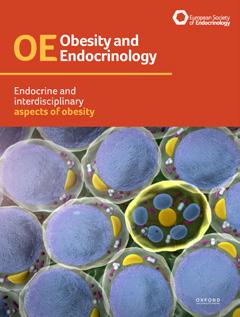
European Journal of Endocrinology
EXTERNAL-LINK-ALT welcomed Felix Beuschlein as Editor-in-Chief. We thank Wiebke Arlt for her dedication as Editor.
Impact Factor 5.3
First ESE and Endocrine Society
Joint Clinical Guideline EXTERNAL-LINK-ALT on diagnosis and therapy of glucocorticoid-induced adrenal insufficiency has been viewed 75,000 times in EJE.
Focus Areas are central to our work. We welcomed new Focus Area Leads EXTERNAL-LINK-ALT Paolo Giacobini, Irene Lambrinoudaki, Ruben Nogueiras, Mercedes Robledo and Greisa Vila, and thank retiring Leads Jenny Visser, Bulent Yildiz, Uberto Pagotto, Maria Christina Zennaro and Niki Karavitaki.
Two ESE European Lectures EXTERNAL-LINK-ALT took place in 2024 – in Slovakia and Norway.
Matej©Shutterstock/ Kastelic
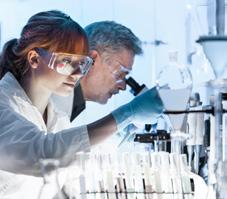

The ESE Curriculum and Training Recommendation EXTERNAL-LINK-ALT was revised and relaunched.
140 candidates sat the very successful Board Exam in Endocrinology, Diabetes and Metabolism EXTERNAL-LINK-ALT
We welcomed the 2024−2026 cohort of EJE Rising Stars EXTERNAL-LINK-ALT : 13 clinical and translational researchers to receive mentoring as future potential journal editors.

Faisal Ahmed completed his first year as Editor-in-Chief of Endocrine Connections EXTERNAL-LINK-ALT
Impact Factor 2.6
New quarterly Editors’ Choice Award recognises significant contributions on biomarkers for diabetic cardiomyopathy, AMH in inherited bone marrow failure syndromes and bariatric surgery in acquired hypothalamic obesity.
Obesity and Endocrinology EXTERNAL-LINK-ALT will advance understanding through comprehensive coverage of basic, translational and clinical aspects of endocrinology. Melania Manco is Editor-in-Chief.
Environmental Endocrinology EXTERNAL-LINK-ALT will examine environmental impacts on hormone systems in humans and living systems, incorporating the One Health perspective, led by Editor-inChief Josef Köhrle.

Bringing people together 5044 individual ESE Members at the end of 2024
6273 registrants for 20 online educational ESE events
4 in-person events took place: Summer School, ECE 2024, EuroPit, EYES Annual Meeting 2024
The new ESE website EXTERNAL-LINK launched with improved navigation, content organisation, searchability and design.
The ESE Membership Portal followed – with a management system to better understand members’ needs, and supply information based on their interests.
The third strand in our digital transformation − the ESE Library EXTERNAL-LINK – was developed for launch in 2025, giving access to valuable course content.


Our membership magazines Endocrine Views EXTERNAL-LINK-ALT and EYES News EXTERNAL-LINK-ALT became digital-only, enhancing their interactivity and integration with other ESE channels, and reducing their carbon footprint.
The Competency Framework for Adult Endocrine Nursing EXTERNAL-LINK is now available in Dutch as well as French, German, Polish, Spanish and Turkish.
10 ESE Postgraduate Training Courses EXTERNAL-LINK-ALT took place online
ESE Talks EXTERNAL-LINK-ALT included sessions with the European Menopause and Andropause Society
2 events were endorsed by ESE EXTERNAL-LINK-ALT 37
With ESPE, ESE developed the first Joint ESPE−ESE Congress EXTERNAL-LINK, which will take place in 2025.
The 11th EYES Annual Meeting EXTERNAL-LINK In Helsinki (right) was attended by
165 participants from 25 countries
The Advanced Research Observership Programme and the Bilateral Observership Programme (a trial in Brazil) were launched.
Distributing awards and grants
Ilpo Huhtaniemi received Honorary Membership of ESE, while Riccarda Granata and Beata Kos-Kudła received Special Recognition Awards (pictured right, top to bottom).
The 2024 ESE Awards EXTERNAL-LINK recognised excellence in endocrinology.

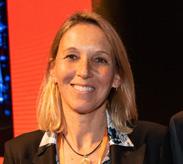
Early Career Members received 12 Young Investigator Awards EXTERNAL-LINK and 8 Poster Awards EXTERNAL-LINK for high quality abstracts at ECE 2024.
642 grant applications received

246 grants made €165,000 awarded More than
So far, the EYES Observership Programme EXTERNAL-LINK has supported:
25 countries from 24 centres across with grants of €30,000 ©iStock/fotoVoyager
90 awardees

Our work with other societies promoted innovation, collaboration and opportunities.
We welcomed new National Partner Societies EXTERNAL-LINK-ALT: the Azerbaijan Endocrinologists Society Public Union, the Kosovo Association of Endocrinologists and Diabetologists, and the Lebanese Society of Endocrinology, Diabetes and Lipids.
The Mexican Society of Nutrition and Endocrinology joined as a new Associate Partner Society EXTERNAL-LINK-ALT, while the European Pituitary Pathology Group joined as a new Specialist Partner Society EXTERNAL-LINK-ALT
The Osteogenesis Imperfecta Federation Europe became the 30th member of our Patient Advocacy Group Affiliate Scheme EXTERNAL-LINK-ALT

ESE and the European Renal Association agreed to work on a joint clinical guideline on hyponatraemia.
A new memorandum of understanding signed by ESE and the Endocrine Society EXTERNAL-LINK-ALT covers collaboration associated with the Transatlantic Alliance Award, joint guidelines and activities at each other’s Congresses.
• European Society of Endocrine Surgeons
• Androgen Excess and PCOS Society
• European Society for Paediatric Endocrinology
• SBEM, FASEN, SMNE from Brazil, Argentina and Mexico
• South Korean Endocrine Society

We welcomed Inozyme Pharma and Kyowa Kirin as new Corporate Members EXTERNAL-LINK-ALT, and Amolyt Pharma (now Alexion), BridgeBio and Camurus as new Supporters.
We thank all our 2024 Corporate Members
Premium: HRA Pharma Rare Diseases (now Esteve), Novo Nordisk, Pfizer and Recordati Rare Disease
Standard: Ascendis Pharma, Inozyme Pharma, Kyowa Kirin, Neurocrine Biosciences/Diurnal, Takeda and Uni-Pharma
Supporters: Amolyt Pharma, BridgeBio, Camurus, Crinetics Pharmaceuticals, Horizon Therapeutics (now Amgen) and Ipsen.
‘We work together to deliver excellence in endocrine care across Europe and beyond.’
ESE led a symposium at the International Congress of Endocrinology 2024, where Josef Köhrle (right) highlighted the impact of EDCs on human health.
Robin Peeters (below right) represented ESE at an EU Belgium Presidency Event EXTERNAL-LINK-ALT, urging policymakers to bring EU legislation on EDCs in line with scientific developments.
ESE condemned ongoing attacks on healthcare facilities and healthcare workers globally, in a humanitarian statement EXTERNAL-LINK-ALT
The Society issued a recommendation addressing the CRH shortage EXTERNAL-LINK-ALT, with guidance from the Clinical Committee.

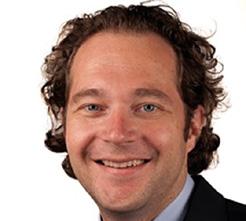

ESE worked with the BioMed Alliance EXTERNAL-LINK-ALT on the upcoming In Vitro Diagnostic Regulation EXTERNAL-LINK-ALT and the European Health Data Space, as well as in discussions on the new FP10 Research Framework Programme
The EARS newsletter EXTERNAL-LINK-ALT provided valuable insights into the European Elections and EU legislation from an endocrine perspective.
Two major projects for ESE − EndoCompass EXTERNAL-LINK-ALT and the Drug Survey – were developed for delivery in 2025, supported by ESE’s National and Specialist Partner Societies and Patient Advocacy Group Affiliate Members.

The huge success of European Hormone Day 2024 included winning an award for ‘Effective Voice of the Year’ EXTERNAL-LINK-ALT .
organisations were involved across 28 countries
#BecauseHormonesMatter was also adopted by Phaeo Para Awareness Week, World Menopause Day, International Children’s Growth Awareness Day, World Hypopara Day, World Environment Day, EU Green Week, World Obesity Day, Rare Disease Day and World Cancer Day.

The first Adrenal Patient Forum EXTERNAL-LINK-ALT on adrenal insufficiency saw They are in our Patient Zone
Emergency treatment cards for patients are now available in more languages: 17 for hypoparathyroidism
along with cards for other conditions.
ESE provides state-of-the-art educational, training and funding opportunities to support career development, success in clinical practice, and research
ESE connects like-minded professionals around the world
ESE champions the best science and clinical guidelines, and disseminates this information globally through our journals and annual Congress
As the voice for endocrinology, ESE advocates on behalf of European endocrine scientists and endocrinologists on the importance of hormones and good hormone health
Join ESE and benefit EXTERNAL-LINK
• Reduced registration rates across all ESE events
• Publication discounts for ESE’s four journals
• ESE Library and ESE On Demand online educational resources
• Training and research grants
• Prestigious awards programme
• Opportunity to contribute to clinical guidelines
• Online Members’ Directory and early-career, nurses, scientists and women in endocrinology communities
• Member magazines, newsletters and news alerts to keep informed

Josef Köhrle is Senior Professor of Molecular Endocrinology at the Institute for Experimental Endocrinology, Charité University Medicine Berlin, Germany. He is the Editorin-Chief of ESE’s exciting new journal, Environmental Endocrinology EXTERNAL-LINK-ALT. Here, he tells us about his work, and his vision for the journal.
What has inspired your interest in environmental endocrinology?
My team’s studies focus on the thyroid hormone (TH) system. The global environment is inextricably linked to this, like no other hormone system. TH biosynthesis, metabolism and action critically depend on an adequate nutritional supply of iodine, as well as selenium, iron and zinc. Yet global iodide deficiency has still not been eradicated.
More than half of the world’s population is affected by inadequate iodide intake, suboptimal TH synthesis, and its serious, costly, biochemical and medical consequences. Meanwhile, our diet and some pharmaceuticals, as well as biocides, pesticides, and industrial and other chemicals in daily life, may include ingredients that interfere with the TH system, which is especially vulnerable due to the inadequate iodide supply.
What excites you most as the journal’s first Editor-in-Chief?
Now is the time for this scientific topic, after years of scepticism, belittling and many efforts to declare it as marginal or irrelevant to human health. ESE has taken the initiative to prioritise this topic in its strategy. I will strive to launch this ‘ship’, together with a highly motivated group of experts as Associate Editors and a strong, competent Editorial Board. Young, aspiring scientists will be involved from the beginning. We look forward to seas that are not too stormy and a good tailwind provided by your excellent submissions of original scientific work and reviews!
What are the journal’s most important aims?
We will provide a platform for novel insights into connections between the environment and hormone systems. Such findings currently come from epidemiological studies on large cohorts exposed to a rapidly changing environment. Both animal experimental and in vitro
studies reveal causal relationships beyond association studies. Various powerful omics-based methods, in silico analyses and modelling of big datasets will identify relevant environmental factors, and quantify their contribution to any disturbance of the delicate hormonal, multifactorial balance between health and illness. This work will find its home in our journal.
Why is this journal needed now?
Understanding the alterations in the hormonal regulatory systems of all lifeforms due to the challenges of the rapidly changing, plasticbased anthropocene will be a major topic over the coming decades.
Environmental Endocrinology can develop into a leading, ESEsupported publishing platform for researchers. Endocrinologists are the specialists with the training to understand complex hormone systems, not just focusing on toxicological or molecular aspects of an environmental impact on a hormone-related process.
Why should ESE Members submit their papers to the journal?
Environmental Endocrinology is your journal, owned by ESE. It is open access, and will reach the global community swiftly. ESE Members receive a 50% discount on article processing charges.
What is the biggest challenge in your field?
Hormonal regulation is overwhelmingly considered subordinate, too complicated, an intellectual game compared with technology-driven, handson disciplines in medicine and life sciences. This applies all the more to environmental factors influencing hormone systems. We must communicate that endocrinologists are the experts dealing with hormones, the most potent biomolecules (apart from some conotoxins). We need to convey that hormonal regulation enables healthy living, survival
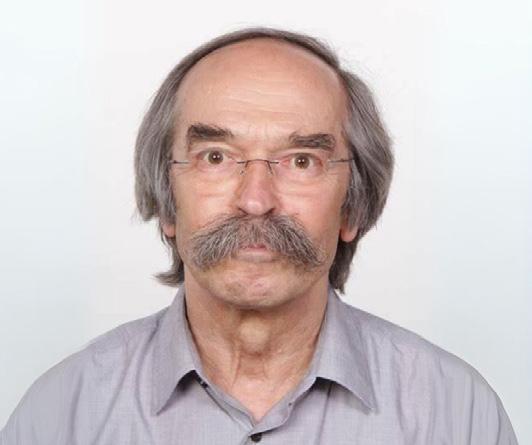
and adaptation to environmental challenges for all lifeforms, including humans, and we should also increase understanding of hormone-related diseases as common, non-contagious disorders with a high socioeconomic impact, as well as rare diseases that have a lasting-effect on quality of life.
What are you proud of in your career?
I am proud of the successful continuous funding of our research by the German Research Foundation (DFG) since my postdoc years. Applying for extramural public research funds as a basic scientist in the field of experimental − but clinically oriented − endocrinology really was no ‘walk in the park’. This was especially true when I submitted project proposals on concepts off the beaten track, ideas
considered by many as marginal, exotic or highly unusual (e.g. effects of secondary plant metabolites, the trace element selenium, or local TH metabolism).
What is your advice to people considering a career in endocrinology?
You have to enjoy biomedical research, be sure of your ideas and subject, be able to convince your team, and build and maintain your network. It won’t be a 9 to 5 job, and you will need to find a sound work− life balance.
What are we likely to find you on a day off?
Enjoying the vibrant Berlin metropolitan area, taking care of my cacti, succulents and other plants, listening to (demanding, classical, modern) music, but not to noise!
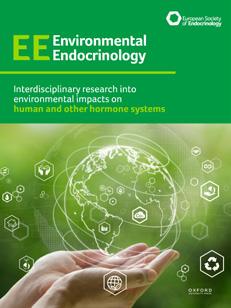
This ESE publication is the inter-disciplinary, open access, online journal dedicated to high quality clinical, translational and basic research on environmental impacts on human and other hormone systems, incorporating the One Health perspective, and including epidemiology, climate research, toxicological sciences, endocrinology and developmental biology.
Find out more and submit your research EXTERNAL-LINK-ALT.
The recipients of the 2025 ESE Awards will be speaking at the Joint Congress of ESPE and ESE in Copenhagen. Here, they preview their inspiring lecture topics.

In the mid-1990s, I launched an international network called Genhypopit, aimed at collecting clinical data and DNA samples from patients with various forms of isolated or combined pituitary hormone deficiency. Over the years, it appeared that an increasing number of genes were found to be involved in these heterogeneous conditions, which mostly affect children but may also be diagnosed in adults.
In 2001, I was lucky to collaborate with Jacques Drouin’s group in Montréal, Canada. They had found a new transcription factor (Tpit) in mice which proved to be the key regulator of corticotroph cell differentiation. The group also found mutations in the orthologue human gene (TPIT, also known as TBX19) in two of the families of patients who harboured isolated neonatal adrenocorticotrophin (ACTH) deficiency, whom we had been studying for candidate genes within Genhypopit. These discoveries confirmed that this factor was also a major determinant of corticotroph differentiation in humans.
We then further characterised patients with isolated corticotroph deficiency who either harboured TPIT mutations (most of the neonatal cases) or did not. In the latter group, we found an unusual association in three unrelated families between ACTH deficiency and common variable immunodeficiency: a new entity that we called DAVID syndrome (for deficit in anterior pituitary function and variable immune deficiency). We identified NFKB2 mutations as the cause of this syndrome. More recently, we were able to introduce these mutations into human hypothalamo-pituitary organoids, which showed that NFKB2 plays a previously unknown role in corticotroph differentiation in humans.
Bridging corticotroph deficiency and corticotroph tumours, we have also studied some pathophysiological aspects of Cushing’s disease, which I plan to address at the Joint Congress of ESPE and ESE in Copenhagen.
Disorders of thyroid hormone action: insights from human genetics

Krishna Chatterjee
European Hormone Medal
I will present notable contributions of our group in the field of thyroid hormone action. We have defined a multisystem disorder, often presenting in childhood, due to mutations in SECISBP2 which controls synthesis of selenocysteine-containing proteins. This syndrome is associated with disordered thyroid hormone metabolism and phenotypes (e.g. muscular dystrophy, azoospermia) due to tissue-specific selenoprotein deficiencies, and features (e.g. photosensitivity, progressive hearing loss, aortic aneurysm) secondary to a lack of antioxidant selenoenzymes. Uniquely, this disorder illustrates the consequences of oxidative stress in humans. We first discovered mutations in thyroid hormone receptor-α, causing a form of congenital hypothyroidism with near-normal thyroid function tests which is underdiagnosed, and in peroxisome proliferatoractivated receptor-γ, causing lipodystrophic insulin resistance, as well as diverse mutations in thyroid hormone receptor-β. I will show that dominant negative inhibition of normal receptor function by their mutant counterparts is a unifying pathogenetic mechanism in these and other nuclear receptor-mediated disorders. Uniquely informative receptor mutations, found in prismatic patients, have elucidated the molecular basis of dominant negative inhibition, informing approaches to treatment of these disorders.
MODY and beyond: the changing face of monogenic diabetes

Kashyap Patel
European Journal of Endocrinology Award
I study a special type of inherited diabetes that runs in families through genetic mutations. This differs from more common types of diabetes. Identifying these genetic causes is crucial, as it helps us to provide appropriate treatment to individuals living with this type of diabetes and to inform families about future implications. In my lecture, I’ll share our latest discoveries about new genetic causes and improved testing approaches. I’ll also present exciting new findings showing that it’s not just about having a particular genetic change. Your overall genetic makeup plays a significant part in whether you develop diabetes. This is revolutionising our understanding of inherited diseases!
Tackling adrenocortical cancer: a clinician’s perspective

Massimo Terzolo Clinical Endocrinology Journal Foundation Award
I have dedicated a large part of my research to the treatment of adrenocortical carcinoma. As a clinician, I felt that this was necessary, since we had very little information on how to manage patients affected by this orphan tumour beyond surgery.
Given the high rate of tumour recurrence after surgery, I considered that the concept of post-operative adjuvant treatment was clinically sound, although supported by mixed evidence. I carried out a series of clinical studies aiming to evaluate the efficacy of adjuvant mitotane treatment and to find predictors of response. I also studied the toxicity associated with treatment, trying to find measures to mitigate it. I co-ordinated the first prospective, randomised study in the adjuvant setting, the ADIUVO trial, which opens the way to personalised adjuvant treatment. I also undertook studies on patients with advanced disease, aiming to find out which treatments are efficacious, what is the best sequence of treatment and how to integrate systemic with loco-regional treatments.

Eugenia Vlachou European Endocrine Nurse Award
I will present research focusing on the critical role of endocrinology and diabetes nursing in managing chronic endocrine and metabolic disorders. Specifically, I will discuss nurse-led interventions in diabetes care and gynaecological endocrinology, highlighting their impact on improving patient outcomes and quality of life. My lecture will emphasise the importance of interdisciplinary collaboration and the integration of specialised nursing roles into healthcare teams. I will also present a novel educational model that incorporates endocrinology and diabetology nursing as a specialised component of the nursing department curriculum of studies. This module aims to provide nursing students with comprehensive knowledge and practical competencies necessary for the effective management of endocrine and metabolic disorders, specifically emphasising diabetes care. The curriculum integrates evidence-based theoretical instruction, clinical training and patient-centred methodologies, highlighting the importance of interdisciplinary collaboration and holistic care.
Additionally, I will share findings that demonstrate how tailored nursing care can address the unique needs of patients, providing a blueprint for evidence-based practice in endocrine care.

Ana Djordjevic
Jens Sandahl Christiansen Award (Basic Science)
My current research aims to link early life environmental factors among children with obesity, who underwent a controlled dietary intervention, with their gut microbiota profiles, to better understand the factors associated with weight loss.
Childhood obesity is becoming a global health problem, with serious health consequences in adulthood. The development of obesity is closely related to environmental factors and the gut microbiota. So far, our results suggest that certain bacterial taxa are positively related to weight loss efficacy, while others show a negative association. The next step is to identify the bacteria that are able to metabolise glucocorticoids, as these metabolites may contribute to weight loss both locally (by influencing intestinal glucocorticoid metabolism, regulating the local immune response and altering epithelial barrier integrity) and systemically.
Overall, modulating certain environmental factors in early childhood and promoting beneficial gut bacteria could be a valuable approach to increase the success of dietary treatment for weight loss and improve long term health outcomes in children with obesity.
Cardiometabolic disease burden and steroid excretion in benign adrenal tumours

Alessandro Prete Jens Sandahl Christiansen Award (Clinical Science)
I am honoured to receive the prestigious 2025 Jens Sandahl Christiansen Award for clinical research. My work focuses on benign adrenal tumours associated with mild autonomous cortisol secretion (MACS), a very common condition estimated to affect 1−3% of adults. I led EURINE-ACT MACS, the largest prospective study to date on benign adrenal tumours with or without MACS. Thanks to this highly collaborative project, involving 14 endocrine centres in Europe and the USA, I was able to recruit 1305 patients with benign adrenal tumours and showed that MACS is associated with increased cardiometabolic burden and severity of hypertension and type 2 diabetes. We also carried out multi-steroid profiling in these patients, looking at a comprehensive panel of glucocorticoids and related metabolites in 24hour urine samples. We uncovered a distinct steroid signature of MACS, characterised by increased glucocorticoid and reduced androgen excretion. My work highlights that MACS is a common determinant of cardiometabolic health in adults, and the EURINE-ACT MACS study informed the 2023 ESE guidelines on the management of incidentally discovered adrenal tumours.
Kyriakie Sarafoglou and Richard J Auchus discuss the recent clinical findings for this groundbreaking new drug.
Patients with classic 21-hydroxylase deficiency (21OHD) require lifelong glucocorticoid (GC) treatment to replace deficient cortisol and to reduce adrenal androgen excess, which can accelerate growth, advance bone maturation, and cause short adult stature.
Crinecerfont is a new corticotrophin-releasing factor type 1 receptor (CRF1) antagonist that reduces adrenocorticotrophin (ACTH) secretion, and the downstream production of excess adrenal androgen, in patients with classic congenital adrenal hyperplasia (CAH) due to 21OHD (Figure 1). Lower androgen levels may allow for GC dose reduction and potentially mitigate the negative consequences of long term GC overexposure starting early in childhood. Two recent, phase 3, multinational, clinical trials (paediatric and adult)1,2 examined the impact of crinecerfont.
Findings
The CAHtalyst Pediatric trial was a randomised, double-blind, placebocontrolled study performed at 37 centres in the USA, Canada and Europe.1 The paediatric group comprised 103 children (aged 2−17 years) with 21OHD who were receiving >12mg/m2/day in hydrocortisone dose equivalents (HCe), and had androstenedione (A4) levels greater than the midpoint reference range and 17-hydroxyprogesterone (17OHP) levels more than twice the upper limit of normal. They were randomised (2:1) to either crinecerfont (25, 50 or 100mg twice-daily, based on weight, n=69) or placebo (n=34) for 28 weeks.
The dosing of GC was maintained stably for 4 weeks to assess the effect of crinecerfont on reducing A4, the primary endpoint of the study. From week 4 to week 28, GC was decreased stepwise to a target daily dose of

CRF1 receptor antagonists
Anti-ACTH monoclonal antibodies
Enzyme blockers
ACTH receptor antagonists
Gene-based therapies
Cell-based therapies
Hydrocortisone granules
Hydrocortisone tablets
Modified-release hydrocortisone
Hydrocortisone pump
Androgen receptor antagonists
Figure 1 Pharmacotherapies for CAH target different levels of the hypothalamicpituitary-adrenal axis. Crinecerfont is a CRF1 receptor antagonist. Reproduced under CC BY 4.0 licence EXTERNAL-LINK-ALT with minor updates from Prete et al.4 https://doi.org/10.1530/EJE-21-0794 ©The Authors 2022.
<11mg/m2/day HCe. The goal was to achieve the lowest GC dose by week 28, while maintaining A4 at ≤120% of the baseline value, or no higher than the upper limit of the normal range, according to sex and either age (for prepubertal participants at Tanner stage 1) or pubertal status (for participants at Tanner stages 2−5).
The baseline mean GC dose of all participants was 16.4mg/m2/day with elevated mean A4 (15.0nmol/l) and 17OHP (263nmol/l) levels, indicating that, despite supraphysiologic GC dosing, adrenal androgen control was poor.
At the end of the 4-week GC stable period, the crinecerfont group had a substantial decrease in mean A4 (14.1 to 7.3nmol/l) compared with an increase with placebo (16.9 to 19nmol/l), meeting the study’s primary endpoint with a statistically significant treatment difference of −9.3nmol/l (P=0.0002). Similarly, 17OHP levels decreased in the crinecerfont group (258 to 84nmol/l) and increased with placebo (273 to 285nmol/l), meeting a key secondary endpoint (P=0.0001) between the two groups.
At the end of week 28, the mean GC daily dose decreased in the crinecerfont group (16.5 to 12.8mg/m2/day) and increased in the placebo group (16.3 to 17mg/m2/day) (P=0.0001). A third of the crinecerfont-treated participants achieved a physiologic GC dose while maintaining A4 at or below baseline levels, compared with none in the placebo group (P=0.0009).
The CAHtalyst Adult trial2 enrolled 182 participants, with a mean GC dose of 32.3mg/day (17.6mg/m2/day) HCe, a mean A4 of 21.7nmol/l (620ng/dl, 2−3 times upper limit of normal), and 17OHP 28.7nmol/l (9467ng/dl, >50 times upper limit of normal). They were randomised 2:1 to crinecerfont (100mg twice daily) or placebo.
After 4 weeks, the reduction in A4 versus placebo with a constant GC regimen was a key secondary endpoint. During the next 8 weeks, up to four predetermined GC dose reductions occurred every 2 weeks to achieve a dose of 8−10mg/m2/day at week 12, provided that no evidence of GC insufficiency or intolerable GC withdrawal symptoms were observed, but independent of steroid biomarker changes. Throughout the final 12 weeks of the placebo-controlled period, the GC dose was adjusted or ‘optimised’ to keep A4 ≤120% of baseline (both measures prior to first-morning GC dose). This complex trial design allowed the investigators to test the hypothesis that reductions in A4 during the first 4 weeks enabled a greater GC dose
‘In broad terms, patients with CAH can be categorised into four quadrants... Typically, they oscillate between the quadrants throughout their lives.’
Low GC doses used but androgens poorly controlled (Quadrant 3)
Good response to low-dose GC (Quadrant 4)
High GC doses used but androgens still poorly controlled (Quadrant 1)
Good response when high-dose GC used (Quadrant 2)
‘From a paediatric perspective, Crenessity could potentially allow for normal growth and pubertal development, and decrease the need for interventions...’
reduction without escape of A4 relative to baseline in the crinecerfont group versus placebo.
The study met the primary endpoint, with a GC dose reduction of −17% favouring the crinecerfont group (−27.3% crinecerfont versus −10.3% placebo, P <0.001). Notably, the mean A4 was maintained below baseline at week 24 in the crinecerfont group as intended, but the mean A4 rose by over 50% (+13.6nmol/l, +388ng/dl) in the placebo group, which artificially inflated the waning GC dose reduction achieved in the placebo group. The statistical penalty applied for participants whose A4 rose above 120% of baseline was to assign the GC dose reduction to 0%. However, this approach somewhat under-penalised the results from the placebo group. The placebo group was crossed over to crinecerfont in the open label phase for 24 weeks, and then participants were invited into an extension phase. Over 96% of randomised participants completed the first 24 weeks, and over 90% proceeded into the extension phase, an extraordinarily high rate.
Adverse events were mostly mild to moderate in severity and resolved without intervention. The most common were fatigue, headache, dizziness, arthralgias, back pain, myalgias and anorexia. In addition, four serious adverse events occurred in the crinecerfont arm, no deaths occurred, and four adverse events lead to crinecerfont discontinuation and trial withdrawal. In one participant, a hypersensitivity reaction to crinecerfont was observed.
In December 2024, the US Food and Drug Administration approved crinecerfont (CrenessityTM) for use with GCs in adults and paediatric patients aged ≥4 years with classic CAH.3
In broad terms, patients with CAH can be categorised into four quadrants (Figure 2), based on their GC dosing and their adrenal androgen response to therapy. Quadrant 1 (orange) has patients whose androgens are poorly controlled with supraphysiologic GC dosing, as was seen at baseline in participants of both the crinecerfont clinical trials.1,2 In quadrant 2, patients’ androgen levels are controlled, but supraphysiologic GC dosing is needed to achieve this control. In quadrant 3, androgens are not controlled with physiologic GC dosing. Finally, quadrant 4 (green) represents the minority of patients, whose androgens are controlled with physiologic GC dosing. Typically, patients oscillate between the various quadrants throughout their lives.
Crenessity could be used as adjunct therapy, starting early in life for those patients in the first three quadrants, to prevent the comorbidities which begin in childhood and continue into adulthood and are associated with GC and/or androgen excess. From a paediatric perspective, for example, Crenessity could potentially allow for physiologic circadian dosing, normal growth and pubertal development, and decrease the need for interventions such as puberty blockers, growth hormone therapy or aromatase inhibitors.
Kyriakie Sarafoglou
University of Minnesota Medical School and College of Pharmacy, Minneapolis, MN, USA
Richard J Auchus
Division of Metabolism, Endocrinology, and Diabetes, University of Michigan Medical School, and the Endocrinology and Metabolism Section, Medicine Service, Lieutenant Colonel Charles S Kettles VAMC, Ann Arbor, MI, USA
REFERENCES
1. Sarafoglou et al 2024 New England Journal of Medicine https://doi.org/10.1056/NEJMoa2404655
2. Auchus et al 2024 New England Journal of Medicine https://doi.org/10.1056/NEJMoa2404656
3. Sarafoglou & Auchus 2025 Journal of Clinical Endocrinology & Metabolism https://doi.org/10.1210/clinem/dgae759
4. Prete et al. 2021 European Journal of Endocrinology https://doi.org/10.1530/EJE-21-0794
Turner syndrome (TS) is a chromosomopathy affecting female individuals with a karyotype containing one X chromosome and a complete or partial absence of the second X chromosome. Here, paediatric and adult endocrinologists discuss its lifelong management.
As the child’s clinical manager, the paediatric endocrinologist is responsible for managing the primary clinical concerns of the child with TS, as well as for encouraging a healthy lifestyle that includes a balanced diet and regular exercise. This is fundamental in improving the quality of life of a child with TS and, probably, in delaying or preventing the onset of metabolic problems (obesity, dyslipidaemia, glycaemic alterations) and hypertension, which are common in adults with TS.
The paediatric endocrinologist’s primary clinical concerns are: time of diagnosis, genetics, short stature, pubertal induction, and transition of care.
The diagnosis of TS remains a challenge, as the average age at diagnosis is still 15 years and there is a percentage of undiagnosed TS, especially in the case of chromosomal mosaicism, as shown by epidemiological studies on large cohorts. This delay represents a major health detriment to the patient regarding delayed treatment. In view of this, the introduction of neonatal screening techniques for early diagnosis may be a consideration in the future.
Another increasing challenge is to understand the genetic mechanisms that characterise TS. The clinical expression of TS can be quite different in patients with the same chromosomal structure. Therefore, to personalise the management of these patients, understanding the epigenetic and epigenomic mechanisms that regulate the phenotypic expression of TS could be a valid predictive tool.
Regarding short stature, these patients benefit from growth hormone (GH) therapy and the results are better if such therapy is started earlier. Approval is awaited for the use of long-acting GH in TS, which could improve patients’ quality of life.
Hypogonadism is a hallmark of TS, and most patients require hormone replacement therapy (HRT) for the onset of puberty, development and maintenance of female phenotypic features and adequate uterine size, and achievement of optimal peak bone mass. Studies are underway to learn more about the most physiological route of administration, dosage and correct timing of therapy. Furthermore, in light of early ovarian failure, it is preferable to discuss the need for fertility counselling in specialised centres with the girl and her caregivers at the paediatric stage, in order to assess fertility options and the advisability of cryopreserving oocytes or ovarian tissue.
Finally, the process of transition of care should start between the ages of 11 and 13. The girl and her caregivers should be involved in her personalised path. The patient should progressively acquire knowledge of the pathology and possible complications in adulthood. Discussions with the medical team must cover not only health, but also education, independence, and vocational and social aspects. The time of transition should be around 18 years of age, in a joint meeting between the girl, her caregivers, and paediatric and adult endocrinology in the paediatric setting.
The management of TS in adulthood is still a matter of debate. Recently, guidelines for TS management have been developed across adulthood, but based on limited scientific and clinical data. Therefore, expanding qualified data on TS in adulthood is a major priority for the implementation of the clinical management of the disorder in adults.
The adult endocrinologist’s primary clinical concerns are timely diagnosis and proper treatment of the numerous endocrine and metabolic diseases that may develop during adulthood in patients with TS (autoimmune endocrine disorders, obesity, type 2 diabetes, dyslipidaemia, metabolic dysfunction-associated fatty liver disease, and osteoporosis). If not properly

diagnosed and appropriately treated, this plethora of complications may negatively influence the development of other medical issues, especially cardiovascular diseases, and quality of life in general.
Moreover, the adult endocrinologist might deal with the difficult management of endocrine and metabolic diseases during pregnancy, which promptly requires a multidisciplinary approach, with the intervention of numerous other specialists (i.e. cardiologists, gynaecologists) who have expertise in caring for individuals with TS.
For most of the endocrine and metabolic diseases associated with TS in adulthood, there are no specific therapeutic indications and there are no robust data to demonstrate whether the response in TS is similar to or different from the general population, even regarding lifestyle interventions. These should be pivotal in adult patients with TS, to reduce the risk of obesity, a powerful trigger in a setting that is prone to dysmetabolic complications.
Regarding HRT, the adult endocrinologist should ensure proper maintenance of hormonal supplementation until the expected age of natural menopause. However, there are no specific indications regarding the choice of therapy, duration of treatment and adequate monitoring, even for this treatment.
In conclusion, the proper management of patients with TS across the life course requires expert paediatric and adult endocrinologists and intertwined co-operation to guarantee a successful transition. In addition, a dedicated multidisciplinary team is essential to the success of the process. Some trigger information that may guide the management of TS, particularly during adulthood, is lacking.
Paediatric experts: Malgorzata Wasniewska and Cecilia Lugarà Department of Human Pathology of Adulthood and Childhood, Unit of Paediatrics, Endo-ERN Centre for Rare Endocrine Conditions, University of Messina, Italy
Adult experts: Alessandra Gambineri and Carolina Cecchetti Division of Endocrinology and Diabetes Prevention and Care, IRCCS Azienda Ospedaliera, and Department of Medical and Surgical Sciences (DIMEC), Alma Mater Studiorum, University of Bologna, Italy
FURTHER READING
• Aversa et al. 2024 Clinical Therapeutics https://doi.org/10.1016/j.clinthera.2023.12.004
• Aversa et al. 2024 Journal of Endocrinological Investigation https://doi.org/10.1007/s40618-024-02315-4
• Gambineri et al. 2022 Journal of Endocrinological Investigation https://doi.org/10.1007/s40618-022-01853-z
• Gravholt et al. 2023 Endocrine Reviews https://doi.org/10.1210/endrev/bnac016
• Gravholt et al. 2024 European Journal of Endocrinology https://doi.org/10.1093/ejendo/lvae050.
• Stochholm et al. 2006 Journal of Clinical Endocrinology & Metabolism https://doi.org/10.1210/jc.2006-0558
• Viuff et al. 2020 Journal of Clinical Endocrinology & Metabolism https://doi.org/10.1210/clinem/dgz039
On 24 April 2025, World Hormone Day EXTERNAL-LINK-ALT will bring people together to raise awareness of the importance of hormone health. There’s still a lot to do, and you can help!
ESE and the ESE Foundation EXTERNAL-LINK-ALT will be promoting World Hormone Day across traditional and social media channels in the lead-up and on the day itself.
You can take part in lots of ways:
• Join the conversation by using the hashtags #BecauseHormonesMatter and #WorldHormoneDay on social media
• Organise an event (online or in person) to promote the small steps everyone can take for better hormone health
• Engage with the press or media by reaching out to local or national outlets to encourage coverage and spread awareness
• Collaborate with endocrine champions in your community who can help share the messages
• Advocate for change by talking to policymakers and organisations that can drive improvements in research, diagnosis and treatment.
Hormones impact nearly every aspect of health, but hormone-related conditions are often under-diagnosed and undertreated. By taking part in World Hormone Day, you will help ensure that hormone health gets the attention it deserves.
If you need help with your World Hormone Day activities, email us EXTERNAL-LINK-ALT or message via social media. Let’s spread the word #BecauseHormonesMatter
Find out more at www.worldhormoneday.org.

‘Together, we can raise awareness of individual actions and call for stronger policies to support the prevention, diagnosis and treatment of endocrine disease.’
Jérôme Bertherat, ESE President
Do you want to drive policy change?
Our specific Policy Toolkit EXTERNAL-LINK-ALT will help you engage policymakers and advocate for hormone health initiatives. It includes:
• A guide with actions at national and regional levels
• Key messages for policymakers and others
• A template letter for political representatives.

To help you join in, ESE has developed a Public Outreach Toolkit EXTERNAL-LINK-ALT with key materials in 15 languages. It contains everything you need, including:
• World Hormone Day logos
• Posters and videos
• Infographics and animations
• Calendar of awareness days
• Social media profile picture frame
• Press release and blog post templates
• Media pitch checklist and template
• Quick guide to finding an endocrine champion
• Tips for using social media.


Use them to find out how to campaign effectively!
Media and news outreach
Engaging with policymakers
Using social media
Promote 10 recommendations for good hormone health
Updated guidance on management of aggressive pituitary tumours and pituitary carcinomas will be published shortly in European Journal of Endocrinology.
Clinically relevant pituitary tumours are very common in the general population, with a prevalence of 80−100 per 100,000 and an incidence of four new cases per 100,000. These tumours are generally benign, and well controlled by medical and/or surgical treatment. However, a small proportion are resistant to medical treatment and will recur despite surgery and radiotherapy. These tumours are considered to be aggressive. Exceptional cases will develop metastases and be classified as pituitary carcinomas. These tumours are rare, but they are associated with high morbidity and mortality, and standardisation of their management is necessary.
History of the guidelines
It was in this context, in 2014, that the ESE Clinical Committee, then led by Pia Burman, proposed the creation of a working group on aggressive pituitary tumours, to collect more data on the clinical characteristics and therapeutic options for such tumours.
To do this, a European survey was carried out from December 2015 to November 2016, enabling an exceptional cohort of 166 patients to be analysed.1 These results, combined with data from the available literature, formed the basis of the first ESE recommendations, published in 2018.2
Why new guidelines?
Following the initial recommendations, it was decided to relaunch an international survey3 to obtain follow-up data on these patients. In parallel, numerous groups have published data from large series of patients. These studies have shed new light on the characterisation of these aggressive tumours, providing a better assessment of the response to temozolomide treatment, and also opening the way to new therapeutic options. The importance of these new data made it necessary to update our recommendations.
To obtain a broader view of the clinical question, it was also essential to invite new experts to join the initial group, so as to obtain a better representation of the specialists treating these patients. The group was therefore strengthened by the presence of a neurosurgeon, a neuro-oncologist, a radiation oncologist, a molecular biologist and a methodologist. In addition, to confirm the international scope of these guidelines, a representative of the Endocrine Society was invited to attend. A total of 14 experts from 10 countries, including four non-European experts, worked on these guidelines.
Main questions that the guidelines tried to answer
• What is the normal growth velocity in pituitary tumours?
• Are there predictors for clinically aggressive behaviour?
• What is the efficacy of different treatment regimens in aggressive pituitary tumours/pituitary carcinomas?
• Are there predictors for treatment response?
• What is the optimal treatment for metastases of pituitary carcinomas?
‘These tumours are rare, but they are associated with high morbidity and mortality, and standardisation of their management is necessary.’
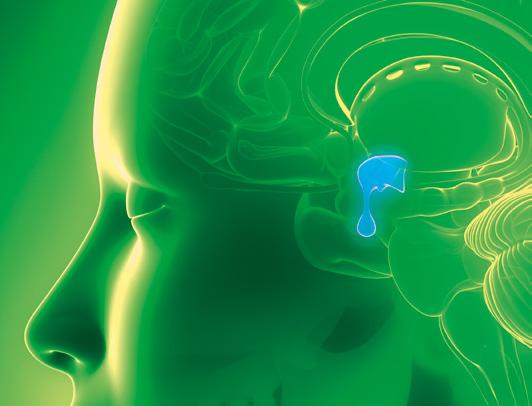
Some key messages
Recent studies have shown that a combination of pathological proliferation (Ki-67, particularly if >10%, mitoses, p53) can identify tumours at risk of recurrence and aggressiveness. Similarly, new molecular markers (somatic mutations of p53, ATRX and SF3B1) appear to be associated with the most aggressive tumours. However, these markers need to be integrated into the clinical context and, to date, no marker alone is sufficient to predict tumour behaviour.
The definition of an aggressive pituitary tumour remains clinical, and diagnosis has to be considered in patients with an invasive tumour and either (1) unusually rapid tumour progression or (2) clinically relevant tumour progression despite optimal standard therapies (surgery, radiotherapy and conventional medical treatments).
After failure of conventional treatments (surgery, sometimes multiple surgeries, and radiotherapy), the first-line treatment remains temozolomide. This treatment is associated with a complete or partial response rate of 37.3% and a progression-free survival at 2 years of between 79 and 83.9%. The data collected from the 341 patients included in our meta-analysis did not allow us to identify factors predictive of response to treatment, but they do allow us to better guide the possible duration of treatment, the identification of potential side effects and the therapeutic strategies to be implemented in the event of treatment failure or escape.
Although therapeutic options in this context remain limited, recent data are encouraging with regard to the use of immune checkpoint inhibitors (anti-CTLA4 and/or anti-PD1) or anti-VEGF (bevacizumab). Although interesting, these new therapeutic perspectives remain second-line options after temozolomide failure.
The rarity and complexity of these tumours require multidisciplinary discussion to define the best therapeutic strategy for each individual situation. We hope that these new recommendations, like the previous ones, will be the trigger for numerous collaborative clinical and basic studies to better characterise the associated molecular mechanisms, validate early markers of tumour aggressiveness and identify new therapeutic options.
Gérald Raverot
Professor of Endocrinology, Lyon University, France
Chair, Guideline Working Group
